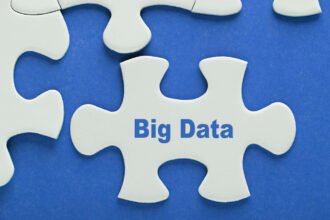Big data is capable of solving some of the most serious challenges of our lives. Key decision-makers are using big data to improve the effectiveness of the criminal justice system, increase equity value for stockholders and invent technological breakthroughs such as new self-driving cars. However, there are other problems that it is helping society tackle. Could the rising costs of education and exploding student debt crisis be one of them?
Is big data the solution to big educational costs?
Education costs have been spiraling out of control over the past decade. As the cost of education rise, the student debt crisis is ballooning out of control as well. According to a study by Make Lemonade, the total outstanding student loan debt in the United States alone is over $1.5 trillion. This is clearly a crisis that will have a significant impact on the health of the economy. Could big data actually be the solution? The answer is, yes. However, some of the solutions might not be welcomed by certain schools are students. Nevertheless, it could be advantageous to many other students and will help improve economic stability in the future. Here are some ways that big data might be the key to tempering the rising costs of education.
Discouraging loans for majors with very low job placement rates
One of the reasons that education costs are so high is that the federal government has been freely giving money to people with little regard for the future payoff. Many students have little trouble getting loans for liberal arts degrees, despite the fact that the underemployment rate for those majors is around 50%. According to Quoteraters, the rate is close to 0% for most STEM jobs. This doesn’t just lead to problems with students being unable to pay off their debt down the road. It also drives up educational costs in the intermediate term. When so many students are able to qualify for loans, universities are able to hike up tuition. This obviously means that students need to take on a lot more debt in the future. How does big data come into play? Both the United States Department of Education and private lenders are able to use big data to identify majors with low job placement rates. They keep close track of this data based on surveys they have conducted with previous graduates. They also collect data from schools on people that dropped out of various programs. This means that big data can help the Department of Education and lenders decide not to give as many loans for people in majors with a surplus of job applicants. This means that schools won’t have as many applicants, which means they will need to compete with each other according to the laws of supply and demand. As a result, they will need to lower their tuition costs to attract the best and brightest. This will inevitably lead to less student debt in the future.
Identifying student loan deferment fraud
The economy never fully recovered from the recession of 2008. As a result, many students were forced to take a lower paying jobs after they graduated. This meant that they often had to defer their student loans. The problem is that some people have lied about their income to qualify for deferments that they were not eligible for. This is a problem for everybody else, because lenders have to increase interest rates on them to make up for the loss of a fraudulent student loan deferments. This is another area where big data can be useful. These people need to use their tax returns to qualify for deferments. This means that it is up to the IRS to identify people that lie on their tax returns. Since there is a greater incentive to under report income among people that can qualify for these deferments, they have a greater responsibility than ever to address the problem. The good news is that the IRS is using big data to identify text cheats. They even use data mining algorithms to screen social media profiles to find signs that people are being disingenuous with their taxes.
Minimizing aid to educational institutions that provide little value to their students
Some educational institutions provide much more value to their students and others. At first glance, some of the universities that have prestigious names are great places to attend. However, they may not add the value that all students need. This is often the case when an otherwise great school has a poor program in a certain major. Big data is helping lenders and the Department of Education weed out these types of schools. They can identify the lifetime value that their degrees provide to their students.
Conclusion: Big data will be in important solution to the student loan crisis
Educational costs have clearly gotten out of control. The good news is that there are a number of solutions on the horizon. Big data is going to play a very important role in limiting these costs in the years to come.








